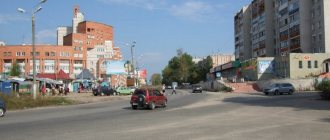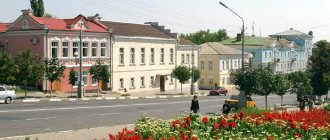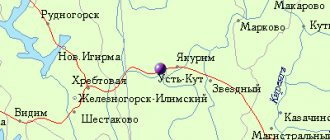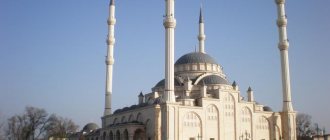Administrative subordination includes:
Cities:
- Kurlovo city
Settlements:
- Settlement Anopino
- Settlement Velikodvorsky
- Settlement Gavrino
- Settlement Herold
- Settlement Dobryatino
- Settlement Zeleny Dol
- Settlement Zolotkovo
- Settlement of Ivanishchi
- Settlement of Ilyichevo
- Settlement Komissarovka
- Settlement Krasnaya Zarya
- Settlement Red Echo
- Settlement Red October
- Settlement Malyukovsky
- Settlement Makhinsky
- Settlement Mezinovsky
- Settlement Nagorny
- Settlement Neverovsky
- Settlement Pervomaisky
- Settlement Tasinsky Bor
- Settlement Tasino
- Settlement Tasinsky
- Settlement Urshelsky
- Settlement Yakimets
- Settlement Neklyudovo
Villages:
- Abbakumovo village
- Aksenovo village
- Village Alexandrovka
- Village Alexandrovka
- Village Alferovo
- Village Andreevskaya
- Aristovo village
- Arsamaki village
- Village of Astakhovo
- Babino village
- Village Baranovo
- Badgers Village
- Beaver Village
- Village Bolshaya Artemovka
- Borzinka village
- Borzino village
- Borisovo village
- Borisovo village
- Village Budevichi
- Bottle Village
- Village Vasilevo
- Village Vasyunino
- Village Vashutino
- Village of Vyrytovo
- Village of Golovari
- Davydovo village
- Village Demidovo
- Village Demino
- Village Dmitrievo
- Village Dolbino
- Village Evsino
- Zary village
- Village Zhigalovo
- Village Zabolotye
- Village Zalesye
- Village Zanutrino
- Village Zakharovo
- Village Ivanovka
- Village Izbishchi
- Village Ikshevo
- Village Ilyino
- Village of Konstantinovo
- Village of Krasny Poselok
- Village Kuzmino
- Village Kupreevo
- Kurlovo village
- Village Lazarevka
- Village Larinskaya
- Village Lesnikovo
- Village Lobanovo
- Maklaki village
- Village Malaya Artemovka
- Malinki village
- Village Malyshkino
- Maslikha village
- Village Makhonino
- Miltsevo village
- Mitenino village
- Mihali village
- Mokroe village
- Village Mordvinovo
- Morugino village
- Village Narmoch
- Narmuch village
- Village Neklyudovo
- Village Nechaevskaya
- Village Nikulino
- Village Novoopokino
- Village Novo-Durovo
- Village of Novo-Maltsevo
- Village of Novo-Novlyanovo
- Village Novo-Pavlikovo
- Village Novo-Pokrovskoye
- Village Novouvarovka
- Village Obdikhovo
- Ovintsy village
- Okatovo village
- Orlovo village
- Village Ostashevo
- Island Village
- Village Pavlikovo
- Village Paevo
- Parakhino village
- Perovo village
- Village of Pershkovo
- Poboyki village
- Popovichi village
- Village Potapkovo
- Village Potapovskaya
- Pochinki village
- Village Prokshino
- Village Protasyevo
- Village Pshenitsino
- Village Rastovo
- Village of Ryazanovo
- Village Savikovo
- Village Savinskaya
- Village Semenovka
- Village Sivtsevo
- Village Skvortsovo
- Spudni village
- Village Starkovo
- Village Staroopokino
- Village Stepanovo
- Village Stepanovo
- Village Sulovo
- Village Talanovo
- Village Talnovo
- Village Timenka
- Village Tikhonovo
- Village Tolstikovo
- Village Trufanovo
- Village Trushkino
- Tyurvishchi village
- Ulyakhino village
- Usada Village
- Fedorovka village
- Fedotovo village
- Village Filatovo
- Village of Fomino
- Village Kharlamovo
- Chaslitsy village
- Village Chekovo
- Chisti village
- Chiur village
- Village Shabanovo
- Chevertny village
- Shestimirovo village
- Village Yagodino
- Village of Yazvitsy
- Dudor village
- Village Vasilevo
- Sintsovo village
- Village Lesnaya
- Village Nikolopolye
- Village Ilyichevka
- Village Red Anchor
- Oblepikha village
Passage:
- Zolotkovsky crossing
Villages:
- Velikodvorye village
- Village Veshki
- Village Georgievo
- Village Grigoryevo
- Village Gubtsevo
- Village Gus-Parakhino
- Village Dubasovo
- Village Zakolpie
- Village Kolp
- Village Kryukovo
- Village Narma
- Village Palishchi
- Village Tashilovo
- Village Tsikul
- Village Chersevo
- Erleks village
Gus-Khrustalny district is located 60 km south of Vladimir, in the southwestern part of the Vladimir region. The district borders in the north with the Sobinsky district, in the east with the Sudogodsky and Melenkovsky districts, in the south with the Ryazan region, and in the west with the Shatursky district of the Moscow region. The district contains 14 settlements, of which 1 is urban - the city of Kurlovo; in total there are 174 rural settlements in the district. The administrative center is the city of Gus-Khrustalny (not part of the district).
Gus-Khrustalny district is the largest in the Vladimir region. The area of the district is 4300 sq. km. The total population is 46.3 thousand people.
The Gus-Khrustalny district is often called Meshchera, the Meshchera region, after the name of the lowland that occupies the entire southwest of the region. The name comes from the settlers who came to this region of forests and swamps more than 2 thousand years ago. The tribes of the Finno-Ugric group, who called themselves “Meshchera”, left in these parts the names of rivers and settlements that were unusual for the Russian ear, reflecting the peculiarities of their ancient language, for example, Kolp, Narmoch, Koloksha, Buzha, Dandur...
Natural resources favorable for glassmaking have made it possible to engage in this craft in ancient times. The current glory of the Gusev glass factories began in the 18th century. This happened thanks to the merchants Akim and Foma Maltsov , who are rightfully considered one of the founders of the Russian glass industry.
The city of Gus-Khrustalny arose as a settlement at the crystal factory in 1756 and was called the “estate of the Gusev factory.” This is how it became part of the formed Vladimir province in 1778.
The Vladimir region itself, within which the region originated and was formed in 1708 as the Vladimir province within the Moscow province. In 1778, an independent Vladimir governorate was formed, divided into 14 districts. In 1796, the governorship was transformed into a province. From 1881 to 1917, the Vladimir province consisted of 13 districts and did not change its borders.
Since 1918, for almost 10 years, the administrative-territorial division of the Vladimir province changed several times. For some time, the territory of Gusevsky district, transformed into Gusevsky district, became part of the Ivanovo industrial region as part of the Vladimir district.
Gusevsky district with its center in the village of Gus-Khrustalny as part of the Vladimir province was finally formed on August 23, 1926. It included 7 volosts of Sudogodsky and Melenkovsky districts and Ryazan province. This date is considered the day of formation of the Gus-Khrustalny district .
Three quarters of the region's territory is occupied by coniferous and mixed forests. The predominant species are pine (52%), birch (30%), spruce, aspen, oak. Rowan, viburnum, and juniper are found in large quantities. The forests are famous for their reserves of berries and mushrooms.
The main rivers of the region are Kolp , Sudogda , as well as the Gus , Pol , Buzha , which are tributaries of the Oka River. All of them are tortuous, unnavigable, and flow through forests. There are many small rivers, as well as swamps with thickets of alder and aspen. Cranberries are abundant in the swamps. Large areas in the upper reaches and watersheds of rivers are occupied by peat bogs.
About 40% of all peat reserves in the region are concentrated in the region.
The forests and wetlands of the region form a mosaic of ecosystems and provide life for a large number of species of animals and birds, including rare ones: more than 30 species of animals, more than 10 species of plants and fungi are listed in the Red Book of the Vladimir Region and Russia. Some corners of the area have been declared natural monuments.
One of the most important railway routes Moscow - Kazan passes through the area.
the Meshchera National Park in the region .
Historical and cultural attractions of the area
Official website of the District Administration: www.gusr.ru
HOLY TRINITY CHURCH
This temple was built by one of the heirs of Akim Maltsov, a retired cornet of the Life Guards Cavalry Regiment, Sergei Maltsov. Work began in 1811, but the Patriotic War that began a year later did not allow the work to be completed on time - the temple was commissioned only in 1816. Initially, the temple was consecrated in honor of Saints Joachim and Anna, and fairs were held on the church square twice a year (in the summer on Trinity and in the fall on Joachim and Anna), attracting merchants from all over the Vladimir region.
With the advent of Soviet power, the temple was closed, and its premises began to be used as a warehouse, workshop, and fire department. Only in 1983 the Holy Trinity Church was recognized as an architectural monument and its active restoration began.
Address: Gus-Khrustalny, st. Luxemburgskaya, 3. Coordinates: 55.6137, 40.67154.
GEORGE'S CATHEDRAL
Leonty Benois, the author of the project for St. George's Cathedral, wrote: “... I put everything I could into this temple, and perhaps it will remain the best of my creations.” This temple is a completely unique architectural monument both in design and execution - a three-nave basilica with a colonnade made of black labradorite, whose facade is made in the style of ancient Russian architecture. The famous artist V.M. worked on the interior of the temple. Vasnetsov – his brush is responsible for the stunning painting “The Last Judgment”. Also, based on Vasnetsov’s sketch, the mosaic panel “The Gracious One Rejoices in You,” located in the altar part of the cathedral, was made.
In the 1920s, the temple was converted into the Palace of Labor, and much of the original design was lost. At the end of the last century, Vladimir restorers managed to restore the white stone portals, mosaics, and carved doors of huge doors. St. Petersburg took part in the restoration of the unique painting “The Last Judgment . Currently, the building of St. George's Cathedral houses one of the most interesting attractions of Gus-Khrustalny - the Maltsov Crystal Museum.
Address: Gus-Khrustalny, st. Kalinina, 2a. GPS coordinates: 55.61991, 40.65804.
PARK "FAIRY TALE"
“Skazka” is a rather dense forest, where among the trees you can find heroes of Russian fairy tales and legends carved from wood. Their figures were created by local artist Valery Kiselyov, who breathed new life into the previously existing, but decayed and abandoned park. The central place of the park is occupied by a picturesque lake, where you can relax in peace and quiet and recharge with the energy of living nature.
Coordinates: 55.62739, 40.70127.
MALTSOVO HOUSES
The famous Maltsov houses were built by the owners of the Gusev crystal factory for their workers - one of these houses can be seen on Oktyabrskaya Street. Now these are ordinary private residential buildings, but thanks to their uniform style they can easily be distinguished from other buildings in the city - they stand out for their small size, red brick and white windows.
Maltsovsky houses are considered an object of cultural heritage of the city, so being their owner is not easy - by law, the owner is obliged to monitor their condition and appearance, and make repairs on time.
Address: Gus-Khrustalny, st. Oktyabrskaya. Coordinates: 55.61467, 40.67627.
GUSEVSKY CRYSTAL FACTORY
The enterprise was founded by industrialist Akim Maltsov in 1756 - and over time, the factory village turned into a city called Gus-Khrustalny. As the enterprise developed and the skills of its workers improved, the fame of Gusev crystal expanded - many well-known companies, for example, the Carl Fabergé Trading House, were customers of the plant.
The fate of the plant had its ups and downs - for example, after the 2008 crisis, it was completely closed and its employees were fired. However, in 2013, production was restored again - now the workshops have new modern equipment, on which craftsmen make their unique designer products. The most interesting of them can be seen in the Crystal Museum (point 2 of this article).
Address: Gus-Khrustalny, st. Kalinina, 28. Coordinates: 55.61564, 40.66792.
CRYSTAL MUSEUM NAMED AFTER MALTSOV
Gusev crystal owes its worldwide fame, among other things, to one tragic event. In 1828, the owner of the Gusev crystal factory I.S. Maltsov was a secretary at the Russian mission in Persia - and was the only survivor of an attack by a maddened crowd on a group of Russian diplomats led by A.S. Griboyedov. To atone for his guilt, the Shah of Persia gave the Russian emperor one of his best diamonds, and gave Maltsov the right to duty-free trade in crystal in Persia. Thus, the Gusev factory acquired an extensive sales market and considerable funds for the development of production. In addition to Persia, the products of Gusev craftsmen were very popular in Central Asia and Transcaucasia.
The Crystal Museum was founded in 1983 and currently its collection includes more than 2,000 unique exhibits. Here you can see pre-revolutionary products that at one time won prizes at exhibitions in Vienna, Paris and Chicago; products of the first Soviet years - reflecting the main milestones of the country's development (“Five-Year Plan in Four Years”, “Spartakiad of the Peoples of the USSR” and others); modern author's works, among which “Hymn to Glass” stands out.
Address: Gus-Khrustalny, st. Kalinina, 2a. Coordinates: 55.6199, 40.65783.
MESCHERA NATIONAL PARK
Gus-Khrustalny is an ideal access point to the “pearl” of the Vladimir land – the Meshchera National Park. The park was created in 1992 to preserve the unique nature and cultural and historical heritage of the Meshchera Lowland. On the site of the modern Meshchera park, archaeologists discovered several ancient burials, confirming that the Vladimir land was inhabited in prehistoric times.
There are many marked ecological routes throughout the park, allowing you to be alone with yourself and nature, and enjoy the peace and tranquility of the Russian forest. Along the routes there are information stands, rest areas, and camping areas. The park also offers its guests several interesting museums: “World of Birds”, “Russian Compound” and others. In addition, the Local History Museum is located in the village of Tasinsky.
Coordinates: 55.63423, 40.68988.
TRADE RANKS
Shopping arcades are an invariable attribute of almost all cities of the Russian Golden Ring - Kostroma , Suzdal , Yuryev-Polsky and others. Gusevsky shopping arcades were built in the middle of the 19th century and were originally called the “Shop House of Haberdashery Manufactories and Food Supplies.” Architecturally, they are a two-story red brick building with white columns and balconies on the second floor. To this day, the shopping arcades are used for their intended purpose - they house many shops and stalls. In addition, here is one of the best restaurants in the city - Maltsov, specializing in traditional Russian cuisine.
Address: Gus-Khrustalny, Freedom Square. Coordinates: 55.61497, 40.66966.
HISTORICAL AND ART MUSEUM
The Gus-Khrustalny Historical and Art Museum opened on June 18, 2011, on the day of the 255th anniversary of the city. It is located in the historical building of the men's Primary School, built in 1898, and offers its guests two interesting exhibitions: “The Goose Museum” and “The Stone Chronicle of Meshchera”, telling about the nature of the Meshchera region, the history of its development and about the goose - the ancient sacred totem of its inhabitants.
Address: Gus-Khrustalny, st. Kalinina, 2. Coordinates: 55.61872, 40.65979.
CHAPEL OF ST. BARBARA
The current stone chapel building was built in 1855 - at the same time a well was built over the nearby holy spring. The chapel was erected on the site of the miraculous discovery of the icon of St. Barbara, which then became her main shrine. In the 1930s, the chapel was closed and a catering unit was located in it - gingerbread cookies were baked here and syrup for children's lollipops was made.
It is interesting that almost every year on the eve of the feast of St. Barbara there was a fire in the building - during one of them the wooden vaults were destroyed. In the 1970s, the catering unit was replaced by a garage, and gradually the holy spring became littered with automobile waste. Only after the decline of Soviet power in 1991, the knowledge of the chapel was returned to the believers and its restoration began by the efforts of parishioners and city residents.
Address: Gus-Khrustalny, 2nd Narodnaya Street, 30. Coordinates: 55.60424, 40.67668.






